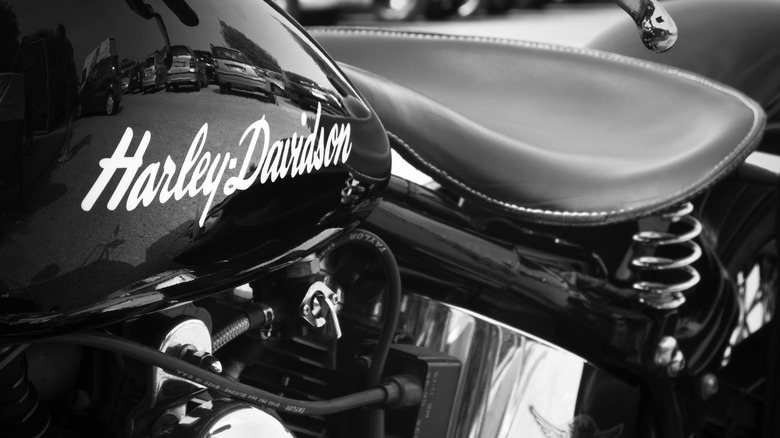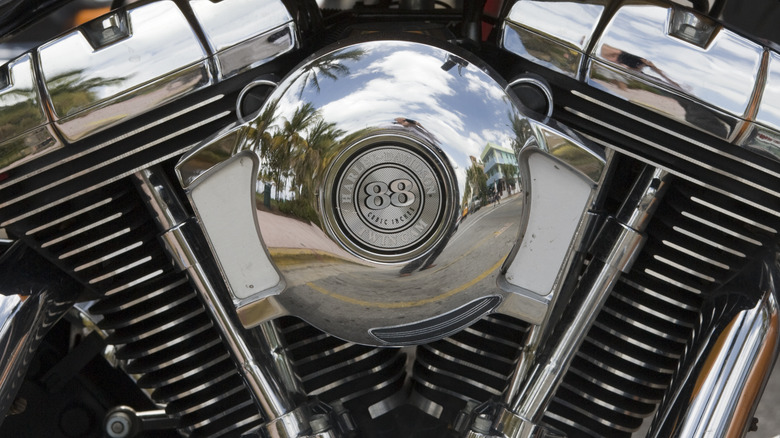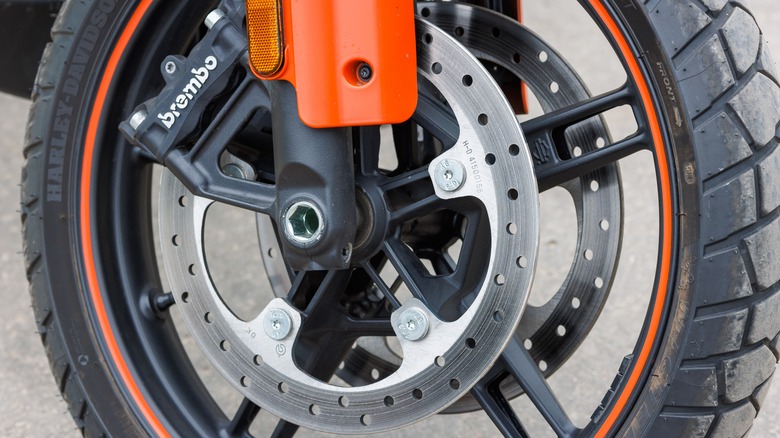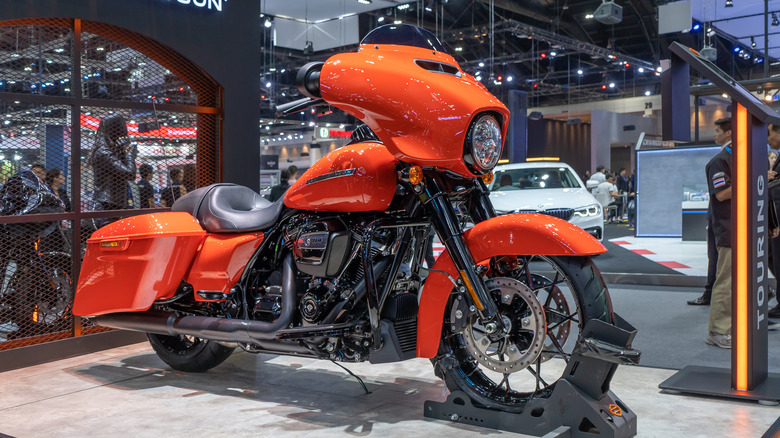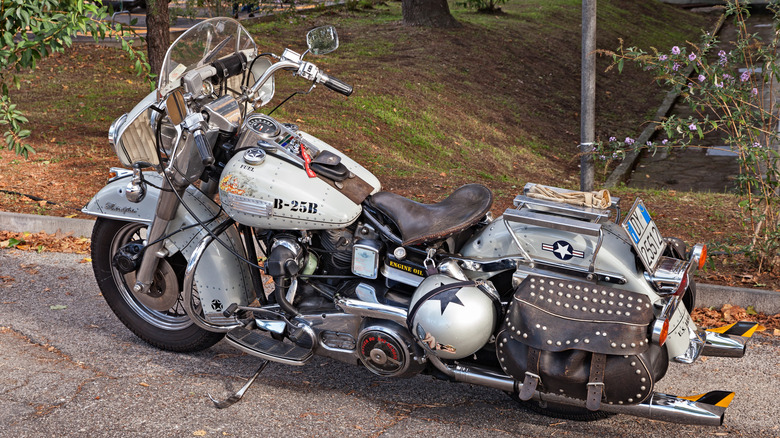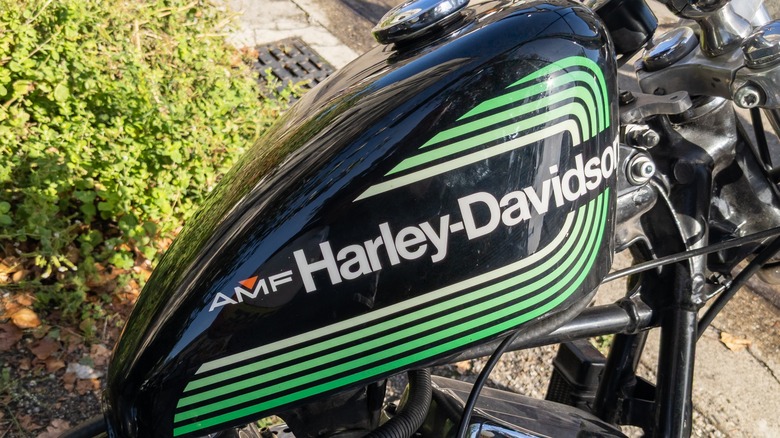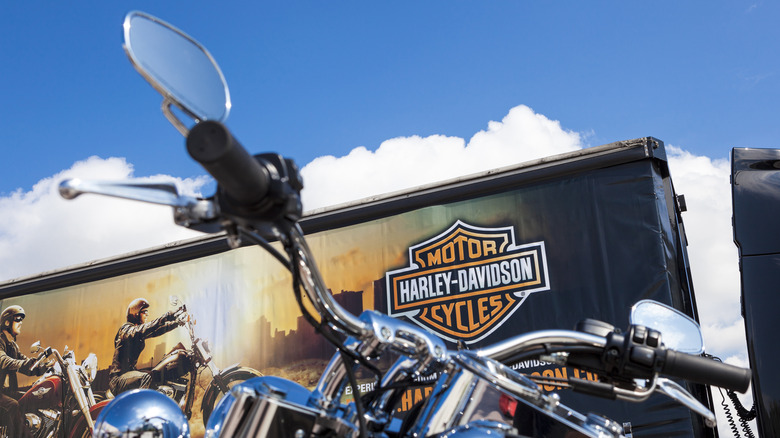5 Used Harley-Davidson Models You Should Steer Clear Of At All Costs
Harley-Davidson is one of the world's best-known motorcycle brands. With a history that spans more than 12 decades, these motorcycle builders inspire passion, whether it be the devotion of supporters or the ire of detractors. Fans devote themselves to their love for Harley's traditional V-Twin powerplant, heavy chrome, and unmistakable American style.
In operation since 1903, Harley quickly garnered a reputation for rugged reliability. The company grew quickly, supplying bikes to the U.S. military during both world wars. On the home front, the brand grew into an American icon. However, in the late 1960s, Harley was in trouble. Bought out by American Machine and Foundry (AMF), they suffered a decade of declining quality.
An ownership group under Willie G. Davidson, grandson of founder William A. Davidson, purchased the company from AMF in 1981. Harley's reputation was at an all-time low, but the new owners developed and introduced a reliable and modernized powerplant, the Evolution engine, in 1984. The Evo was largely successful and not only helped stave off bankruptcy — it also led to Harley building some of the best V-Twin engines ever.
With a long history of ups and downs, consumers looking to buy a used Harley-Davidson have much to chew on. Choosing the right model, or even year, can be a tricky endeavor. Join us as we look at factory recalls, design flaws, safety concerns, and commonly reported issues to determine which used Harley-Davidson models you should steer clear of at all costs.
1999 to 2006 Twin Cam 88s
The Road King, Road Glide, Electra Glide, Super Glide, Low Rider, and Wide Glide all got the Twin Cam 88 — an alleged upgrade from the Evolution – in 1999. The Heritage and Springer Softail, Fat Boy, and Night Train received the troubled engine in 2000.
After the AMF debacle, Harley faced a daunting task to win back consumers' trust. One of the linchpins of this strategy was the Evolution engine, and it performed well at this task between 1984 and 1999. The engine did the trick, slowly building a reputation for reliability. However, by the late 1990s, Harley needed to take the next evolutionary step. Unfortunately, it was a stumble. The Twin Cam 88 engine, a significant introduction in 1999, proved troublesome at best.
Overhead twin cams were new to Harley, and the cam chain tensioners soon earned a reputation for shoddy construction, especially between 1999 and 2002. Made from plastic, they would wear out and introduce plastic particles into the oil pump, causing engine failure. Riders also report shifting issues with the transmission and rare cases of crankshaft runout. The first few years of the Twin Cam 88 are especially troublesome. As time passed, Harley ironed out some of these issues, but the Twin Cam 88 remains a big swing and a miss regarding reliability and quality control.
2008 to 2011 Touring, CVO Touring, and VRSCs with ABS
A robust and reliable engine with hair-raising torque levels is what fans love most about Harley-Davidsons. Motorcyclists enjoy the sensation of speed, the vague feeling of risk, and the thrill of taking a corner at the apex. What they don't talk about as much is a much less sexy but much more important aspect of riding — braking.
One of the dangers of buying a used bike is having no idea what maintenance it has undergone. This can prove dangerous. If you're considering one of many of the above models built between 2008 and 2011, you might want to think twice. Consumer Reports notes that Harley-Davidson issued a massive recall for these bikes equipped with anti-lock brake systems (ABS).
The problem is rooted in owners who fail to flush the brake fluid regularly -– a task often overlooked by riders –- without following the owner's manual. The old brake fluid may cause a component in the ABS to become sticky, increasing the possibility of brake failure and a crash.
Harley-Davidson's recall offered owners a free repair through a free brake fluid flush and replacement. You can check if the bike you're looking at underwent the recall on the NHTSA website, but brake issues are the one thing you don't want to mess with when it comes to motorcycles. Better to find a model with no history of braking problems.
2014 and 2016 Street Glide
The Street Glide nameplate dates back to just after AMF sold Harley-Davidson. The first Street Glide appeared in 1980s as an air-cooled, four-stroke bagger meant to keep riders comfortable on long rides. Over the years, the touring bike became sleeker, more powerful, and updated with technological wizardry like Bluetooth and touch-screen displays. For decades, the Street Glide has been a premium bike in the Harley lineup.
However, it's important to note that the Street Glide, like any other vehicle, is not without its flaws. In the mid-2010s, several issues came to light, including clunky transmissions, stalls and fires, electric issues, and overheating. The NHTSA reports that in 2014 Harley had to recall over 25,000 bikes, including Touring Street Glides, due to hydraulic clutch malfunctions that prevented the clutch from disengaging. The 2014 models also faced widely reported clutch issues that hindered their disengagement.
The 2016 Street Glides experienced brake failures caused by seizing calipers and overheating, with riders reporting warped and cracked rotors. If you decide to take a chance on one of these bikes, expect to pay for upgraded brake components before taking it on the street.
2007, 2010 to 2012, and 2015 Electra Glide
The Electra Glide has been a Harley mainstay for nearly 60 years. Introduced in 1965, it was one of the earliest Harley adopters of electric start and is known for its assortment of bells and whistles. The Electra Glide retains that reputation as a full-sized bagger with accessories like Bluetooth and digital touch screens. But some years should be avoided.
One of these models' fatal flaws is the dreaded "death wobble." Riders reported vibration and wobbling at high speeds. Unbalanced tires, lousy alignment, loose components, or other imbalances in the front end can cause these issues. A motorcycle that exhibits these behaviors should be avoided at all costs.
In addition to front-end instability, the 2010 and 2011 Electra Glide Limited bikes got caught up in the same recall mentioned above in the 2008 to 2011 Touring section. Combining a front-end death wobble with failing brakes is a recipe for disaster. The best-case scenario is doing a ton of costly and time-consuming maintenance to ensure you stay safe on the road.
AMF Harleys 1970 to 1981
One intriguing aspect of Harley's history is the little-known fact that the founding families relinquished control to the American Machine and Foundry (AMF) in 1969 to avoid a hostile takeover. This pivotal sale began a tumultuous period of changing ownership and public offering, a chapter that has impacted the quality and reputation of Harley of Harley's offerings over the years.
Many Harley fans consider the AMF years to be dark days. The new owner slashed the workforce while doubling production to 75,000 annually. Bikes rolled off assembly lines with missing parts. Dealerships had to repair new bikes before putting them up for sale. Outdated engines vibrated unmercifully and leaked oil and transmission fluid. The Harley brand suffered a blow to its already ailing reputation.
Vaughn L. Beals, one of the executives who, along with Willie G., repurchased Harley from AMF in 1981, admitted in The New York Times, "First we thought it was their culture. Then we thought it was automation. Then we thought it was dumping. Finally, we realized the problem was us, not them."
Consumers of used Harleys would do themselves a favor by avoiding the AMF bikes. These bikes were built before Harley began rubber-mounting engines, leading to all sorts of vibration-related damage and uncomfortable rides. At this point, the newest AMF Harleys are over 40 years old. If you're searching for a relaxing way to enjoy motorcycling rather than a leaky, uncomfortable project, there are better ways to go than an AMF bike.
Methodology
Riding a motorcycle is an incomparable thrill. One reason is the slim margin of error between riders and potentially devastating consequences. Safety should always come first when shopping for your next motorcycle. Finding the right model for your riding style with a good maintenance history is only part of the equation. Getting the proper jackets, helmets, boots, and other riding gear is also paramount.
It's important to note that not every motorcycle on this list will be inherently flawed, and bikes that are not on this list should be avoided. Our team has meticulously examined the recall history, commonly reported problems, and development process of some of Harley-Davidson's motorcycles to determine which bikes are best avoided upon initial look. Now that you've begun researching what to avoid check out some of the best Harley-Davidson motorcycles ever made. Good luck and happy riding!
